



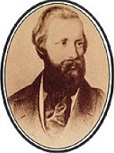
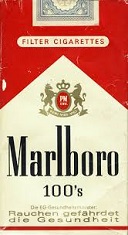
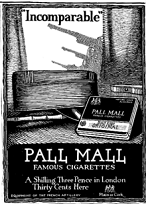
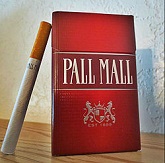
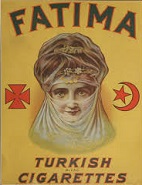
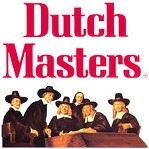

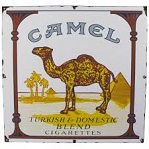

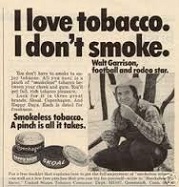
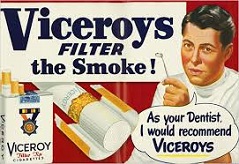
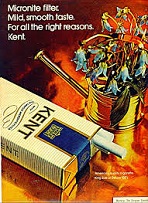
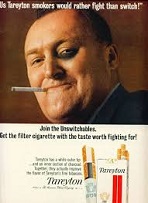
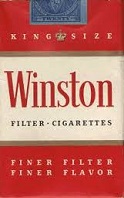


















TLW's Tobaccoscope™ (Tobacco Historyscope) |
By T.L. Winslow (TLW), the Historyscoper™ |
© Copyright by T.L. Winslow. All Rights Reserved. |
Original Pub. Date: Apr. 9, 2016. Last Update: Nov. 24, 2018. |
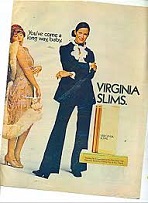
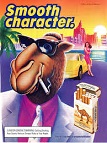
Westerners are not only known as history ignoramuses, but double dumbass history ignoramuses when it comes to tobacco and tobacco history. Since I'm the one-and-only Historyscoper (tm), let me quickly bring you up to speed before you dive into my Master Historyscope.
Tobacco has a long history that's lost in the mists of time, but it seems to have originated in the Americas about 6K B.C.E., where it became a sacred plant.
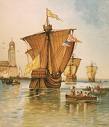
The Ultimate Thank God It's Friday? On Oct. 12, 1492 (Oct. 22 Gregorian) (Fri.) (2:00 a.m.) (after 36 days and 2.6K mi.), Pinta's crow's nest sailor Rodrigo de Triana (Juan Rodrigo Bermejo) (1469-?) does guess what, you guessed it, sights land (and later gets so pissed-off at not being given a reward that he moves to Africa and converts to Islam?), and Christopher Columbus (1451-1506) and his crew anchor at San Salvador (Sp. "Holy Savior") (Watlings) Island (called Guanahani by the aborigines) in the Bahamas just N of the Tropic of Cancer, at 23.5 deg. N 75 deg. W (the log books say 24 deg. N 75.5 deg. W) (named after pious pirate Watling, who forbade pillaging on Sundays, the residents renaming it San Salvador in 1926 to claim it as the place of Columbus' first landfall after 434 years of controversy, but it is never conclusively decided, with Cat Island and Samana Cay proposed), and Columbus dresses in full admiral's regalia to take possession of the new land in the name of Ferdinand and Isabella; having never seen a ship, the natives don't see them until a shaman convinces them that they're real, after which they greet Columbus with warm hospitality, causing him to write "They willingly traded everything they owned... They do not bear arms... They would make fine servants... They could easily be made Christians... With fifty men we could subjugate them all and make them do whatever we want"; after the natives present them with tobacco leaves, which they discard, they sail SW through the Great Bahama Bank, landing on Cuba on Oct. 17, thinking it is the Chinese continent, searching in vain for the magnificent cities described by Marco Polo; on Oct. 20 Columbus writes "I shall set sail for another very large island which I believe to be Cipango, according to the indications I receive from the Indians on board", which proves to be Hispaniola, and he finally lands on Haiti on Dec. 5. In Nov. a gift of tobacco leaves from the Arawaks (Aruacans) is kept this time after Santa Maria crewman Rodrigo de Jerez learns to smoke from the natives, and brings back the habit to his hometown of Ayamonte, causing his wife to denounce him as a man who "swallows fire, exhales smoke, and is surely possessed by the devil", after which he is imprisoned by the Spanish Inquisition for seven years, by which time the super-addictive habit of smoking has caught on.
In the 16th cent. the Water Pipe (Bong) for smoking is introduced in Ming China.
In 1531 European cultivation of tobacco begins in Santo Domingo.
In 1556 tobacco is introduced into France by Andre Thevet, a monk from Angouleme.

In 1560 French ambassador to Portugal Jean Nicot (1530-1600) imports the tobacco plant to Portugal, and sends some tobacco to Catherine de' Medici of France, who doctors her son Francis II with it, causing it to become known as the Queen's Herb; it is renamed Nicotiana tabacum.

In 1562 English profiteer Sir John Hawkins (Hawkyns) (1532-95) (2nd cousin of Sir Francis Drake, who starts out as his apprentice) sails to the New World along with three ships, kidnapping 301 African slaves from a Portuguese slave ship in Sierre Leone before reaching Borbuta, Venezuela, then Rio Hacha in Colombia, selling the slaves for sugar, ginger, and pearls in Santo Domingo after flaunting the Spanish, who try to impose taxes, which he laughs off with a threat of burning them down, causing them to ban all English ships from trading in the West Indies; he then returns to England via the French colony in Fla., arriving next Sept., giving his backers a tidy 60% profit, becoming the first to run the Triangular Trade to the Spanish colonies in the Americas and make a profit, interesting Queen Elizabeth I, who takes shares in his expeditions in 1564 and 1567, during which he makes improvements to English ships that help them win against the Spanish Armada in 1588, for which he is promoted to rear adm., while he introduces tobacco smoking to English sailors, along with sweet potatoes; thanks to Hawkins late in this cent. the Transatlantic Triangular Slave Trade is developed between W Africa, the Caribbean, and Europe (ends early 19th cent.).
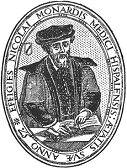
In 1565 Spanish physician-botanist Nicolas (Nicolás) Bautista Monardes (1493-1588) pub. Historia medicinal de las cosas que se traen de nuestras Indias Occidentales (Medical study of the products imported from our West Indian possessions) (2 vols.); 2nd ed. 1569; 3rd ed. 1574; the first description of "el tobaco" and other Am. plants, praising tobacco smoke as a panacea.
About 1570 the Venetians import coffee from Turkey; in return tobacco arrives in Turkey and Poland; European tobacco cultivation begins in Cuba.
In 1580 the Venetians import coffee from Turkey; in return tobacco arrives in Turkey and Poland; European tobacco cultivation begins in Cuba.
In spring 1586 Sir Francis Drake introduces tobacco pipe smoking to Sir Walter Raleigh before capturing Cartagena in Colombia (capital of the Spanish Main) and sacking St. Augustine on the E coast of Fla.; on June 26 Drake visits Roanoke Island and learns of its woes of recurring Indian attacks and supply shortages; in July after dropping off 15 of his own men (who are never heard from again), he returns the disheartened colonists to England, who cause a sensation by smoking (drinking?) sotweed (tobacco) from pipes; Sir Walter Raleigh becomes the first ranking Englishman to smoke, helping to make the nasty habit fashionable (along with boy buggering)? - red eyes plus a grunt, it'll all make sense?
In the first decade of the 17th cent. European cultivation of tobacco begins in Brazil; coffee first enters Europe through the port of Venice; the consumption of both begin to skyrocket in Europe, taking over by the end of the cent. except in snooty England; Pope Clement VIII gives coffee his blessing, saying that it's unfair to "permit Muslims to monopolize it".
In 1600 Sir Walter Raleigh becomes gov. of Guernsey in the Channel Islands, and persuades old Queen Elizabeth I to try tobacco smoking, demonstrating it to her and being doused by a member of the court who thought he was on fire - if it makes you happy?
About 1601 tobacco smoking is introduced into Turkey by the English; no hookahs for 20 years.
In 1602 English explorer Bartholomew Gosnold (1572-1607) explores and names Cape Cod, and visits the Elizabeth Islands at the SW corner, incl. Martha's Vineyard, and visits and builds a small fort on Cuttyhunk Island, all of which pretty much makes him the discoverer of New England's coast?; he is visited by a delegation of 50 Indians in 9 canoes (incl. the father of Massasoit?), who sit on their heels "like greyhounds", enjoy all English foods offered except mustard, mimic English speech accurately, and give Gosnold a tobacco pipe to smoke; he harvests sassafras roots for use in treating syphilis and rheumatism, and abandons his fort after four Indians attack his men while foraging; he later becomes a capt. in Jamestown - they filmed "Jaws" where?
The original Marlboro Man wears Jacobean clothes? In 1612 commercial tobacco ("green gold") is first raised in Va. as a cash crop by John Rolfe (1585-1622), giving the colony a raison d'etre as a drug dealing supply base, causing it to reorganize with better supply lines and begin establishing satellite squatter settlements on Powhatan farmland, pissing them off; the first crop is the harsh and biting native variety, but he later switches to the more mild Spanish varieties and scores a commercial success, creating the first Am. cash cow; meanwhile the Indians begin going on the defensive as snaphance guns are introduced in this decade, elminating the need for separate matches, and the cleared land gives the English an advantage against Indians, who can shoot arrows 5x as fast but need to hide behind trees; a lame attempt to capture English guns is the only loser's game they got left, and by the 18th cent. they are nearly landless and reluctantly adopt English ways, and by modern times the original 30 tribes are down to five, two on reservations; at least they get to stay?
By 1620 the James River basin from the mouth of the Chesapeake River to within 20 mi. of modern-day Richmond has been settled under the sponsorship of the Virginia Co., which organizes itself into the Council for New England, intending to colonize it, but too bad the Pilgrims beat them to it before the king approves it?; tobacco-hating James I orders the culture of silk (sericulture) in Va., but it is given up by 1670 in favor of more profitable tobacco.
In 1620 the first regular shipment of indentured servants arrives in North Am. to work the tobacco plantations in Va.; commercial tobacco growing in England is banned in return for a 1 shilling per lb. duty on Va. tobacco; 40K lbs. are exported this year, and in 1670 Va. and Md. together ship 15M lbs.; in this decade Va. passes Blue Laws, with a penalty of 1 lb. of you guessed it.
In 1620 tobacco use is outlawed in Japan, but becomes a rage in Korea.
In 1623 the hookah or nargile becomes popular in Turkey 20 after tobacco is introduced.
On June 16, 1624 the London (Virginia) Co., the company colonizing North Am. is dissolved due to the unpardonable imprudence of the colonists in letting themselves get their asses kicked by Indians, plus the fact that a few tobacco tycoons monopolize the indentured servants; Virginia becomes a royal (crown) colony, and in Aug. Sir Francis Wyatt becomes royal gov. again with a term of five years; the headright system continues; England establishes a royal tobacco monopoly, fostering lung cancer on its own pop.?; Virginia's white pop. is only 1,132 despite 14K immigrating there since 1607.
On Feb. 1, 1633 the Tobacco Laws are passed, limiting Va. tobacco production supposedly to prevent their dependence on a 1-crop economy.
In 1635 sales of tobacco in France are limited to apothecaries, and only on doctors' prescriptions.
In 1640 Pope Urban VIII orders Spanish priests to stop smoking cigars.
In 1643 Chinese scholar Fang Yizhi warns about the dangers of tobacco, saying that it will "blacken the lungs" and lead to early death, causing Emperor Chongzhen to outlaw growing and smoking it.


In 1760 Lorillard Tobacco Co. is founded in Manhattan, N.Y. by Pierre (Peter) Abraham Lorillard (1742-76), becoming the oldest tobacco firm in the U.S. and world; the logo is a native Am. smoking a pike behind a hogshead of tobacco; it goes on to produce Beech-Nut chewing tobacco, and cigarette brands incl. Newport, Old Gold, Kent, True, Satin, Max, and Maverick; in July 2014 it is acquired by Reynolds American Inc. for $25B.
In Feb. 1763 John Adams coins the term "caucus" (Lat. "caucus" = drinking vessel) after a meeting of the Caucus Club in the attic of friend Tom Daws, with the soundbyte "There they smoke tobacco till you cannot see from one end of the garrett to the other. There they drink phlip I suppose, and there they choose a moderator, who puts questions to the vote regularly, and select men, assessors, collectors, wardens, fire wards, and representatives are regularly chosen before they are chosen in the town."
In 1766 Prussia gains a tobacco monopoly.
In 1828 Nicotine is first isolated in pure form by Wilhelm Hienrich Posselt (1806-77) and Karl Ludwig Reimann (1804-72) of Heidelberg, Germany from the leaves of the tobacco plant.
In 1843 the French govt. declares a monopoly on the manufacture of cigarettes, which are made from discarded cigar scraps and known as beggar's smokes.

In 1845 French dramatist Prosper Merimee (Mérimée) (1803-70) pub. the novel Carmen, about a cigarette girl from Seville in a factory in Andalusia who seduces govt. official Don Jose to help her smuggler family, causing him to go bad; at the end she hurls her ring at him, and he stabs her; based on Maria Manuela Kirkpatrick, Countess Montijo (1794-1879) of Spain, whom he met in 1830, coaching her daughter Eugenie during her courtship by Napoleon III while opposed to their marriage; when she becomes empress Eugenie in 1853, he is made a senator; in 1875 the opera by Georges Bizet debuts.
In 1845 the Casa del Habano in Cuba begins manufacturing fine cigars.


In 1847 Marlboro brand cigarettes are first marketed in England, named after Great Marlboro St. in London, where they are manufactured, and target to English women smokers, followed in the 1920s by Am. female smokers; during WWII it is discontinued, then relaunched in the 1950s after stories about the health detriments of smoking, touting its mildness and filter, changing the marketing emphasisis to men, introducing the Tatooed Man, followed in 1954 by the Marlboro Man, becoming the #1 brand by 1972.
In 1856 after observing Turks smoking as British paymaster to the Turkish forces in the Crimean War, Robert Peacock Gloag opens the first cigarette factory in England at Deptford Lane in Walworth, producing the Sweet Threes brand (yellow tissue paper), becoming the first branded cigarettes, making cigarette smoking popular in England.

In 1859 English tobacconist Philip Morris (1835-73) begins making custom hand-made cigarettes on Old Bond Street in London, producing Philip Morris Cambridge and Philip Morris Oxford Blues in 1870; in 1902 Philip Morris Inc. Ltd. is founded in New York City.
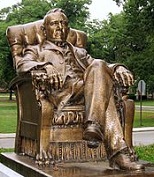
In 1865 after serving in the Confed. navy and being captured in Apr. then released, George Washington Duke (1820-1905) founds W. Duke & Sons to produce the Pro Bono Publico (For the Public Good) pipe tobacco, moving to Durham, N.C. in 1874 and retiring in 1880, leaving the business to his son Buck Duke, who goes on to found the Am. Tobacco Co., largest tobacco manufacturer on Earth.
In 1865 Frederic Storm and George Storm begin manufacturing hand-rolled White Owl brand cigars in Bayside, Queens, N.Y. in Little Neck Bay, named after a snowy owl that flew into Frederic's bedroom - during a storm?
In 1878 trading cards and coupons begin to be widely used in cigarette packs.


In 1880 responding to a $75K reward, James Albert Bonsack (1859-1924) of Va. develops the Bonsack Machine (U.S. patents #238,640 and #247,795 in 1881), the first machine for making yummy-sexy cigarettes; in 1884 devout Methodist James Buchanan "Buck" Duke (1856-1925) of Durham, N.C. buys two Bonsack machines and produces 744M cigarettes by the end of the year, underselling all competitors and creating a monopoly with his Am. Tobacco Co. - a greater mass murderer than Attila the Hun?
In 1883 N.Y. state passes a law banning the practice of rolling cigars in homes, but it is ruled unconstitutional 4 mo. later, allowing the 127 apt. houses in New York City employing 7,924 people in 1,962 families to stay in business.
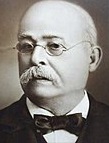
In 1885 Ybor City NE of Tampa, Fla. is founded by Spanish-born cigar manufacturer Vicente Martinez Ybor (1818-96), who moves his cigar factory from Key West, Fla. and attracts workers from Cuba and SW Sicily, becoming known as "Cigar City" (cigar capital of the U.S.), peaking by 1900 (pop. 16K), becoming known as "Florida's Latin Quarter", then starting a downhill slide in the 1930s when the Great Depression and mechanization begins cutting employment, reducing the pop. to nil by the late 1970s; in the late 1990s part of it is revived as a night club and entertainment district; in 2018 mysterious tunnels are discovered, and speculated to be part of a network that transported Chinese hos from Cuba in the early 1900s.
In Feb. 1894 Brown & Williamson Tobacco Co. is founded in Winston (modern-day Winston-Salem), N.C. by George T. Brown and his brother-in-law Robert Lynn Williamson; in 1927 they are acquired by British Am. Tobacco Co.; in 1929 they introduce Wings brand 10-cent cigarettes; in 1933 they introduce Kool brand menthol cigarettes are introduced, becoming the first popular menthol cigarettes, overtaking Spud brand, introduced in 1927 by Axton-Fisher Tobacco Co; in 1936 they introduce the low-cost Viceroy brand; in the early 1970s they introduce the Laredo brand do-it-yourself cigarette kit, which proves a dud and is discontinued; in 1978 and 1994, export and U.S. rights are acquired to Lucky Strike brand; on July 30, 2004 they merge with R.J. Reynolds Tobacco Co.


In 1899 Pall Mall (pr. like pell-mell in England, pall-mall in the U.S.) brand premium cigarettes are introduced by the Black Butler Co. of Britain, going on to introduce 85mm king-size cigarettes in 1939, with the slogans "Travels the smoke further" and "OUTSTANDING... and they are MILD!", becoming the best-selling brand in the U.S. in 1960; in 1966 they introduce 100mm longs, which doesn't stop Winston brand cigarettes from passing them up as #1 in the U.S.; in 1994 they are acquired by Brown & Williamson, which merges with R.J. Reynolds on July 30, 2004; the logo features large art nouveau letters, a white coat of arms with a regal lion on each side and a knight's helmet on top, with the mottos "Per aspera ad Astra" (Through hardships to the stars) and "In hoc signo vinces" (By this sign you shall conquer), along with the slogan "Wherever Particular People Congregate"; in 2009 all varieties use color designators, incl. Red, Blue (Lights), Orange (Ultra Lights), Black (Menthol), White (Menthol), and Gold; "A classy way to commit suicide." (Kurt Vonnegut)
On May 15, 1911 the U.S. Supreme (Fuller) Court rules unanimously in Standard Oil Co. of N.J. v. U.S. to find John D. Rockefeller's Standard Oil Co. guilty of monopolizing the petroleum industry, and orders it broken up into 33 corps. (5 major plus 28 smaller corps.), along with the Am. Tobacco Co. for violating the Sherman Antitrust Act; at the same time the court weakens the act by adopting the "rule of reason", finding that only "unreasonable" restraint of trade is forbidden - IOW, we are open to bribes as long as it's not too obvious?
In 1911 tobacco growing is permitted in England for the first time in 2.5 cents.

In 1911 Fatima (pr. fa-TEE-ma) brand from Liggett & Myers becomes the first cigarette brand to be sold in 20-unit packs (15 cents); in the 1940s the brand sponsors the "Dragnet" radio series; it is discontinued in 1980 - wasn't that Muhammad's babe?

In 1911 Dutch Masters brand machine-rolled cigas with natural wrappers are introduced by G.H. Johnson Cigar Co., which merges in 1921 with the Consolidated Cigar Corp.; logo is Rembrandt's 1662 painting "The Syndics of the Drapers' Guild (De Staalmeesters"; in the 1950s-1960s comedian Ernie Kovacs becomes the spokesman; in the early 1990s their wrappers are rerolled with marijuana, becoming known as "Dutches".



In 1913 modern cigarette industry is born with the introduction of the Camel brand by Va.-born tobacconist Richard Joshua "R.J." Reynolds (1850-1918) of Winston-Salem, N.C. (known for adding saccharin to chewing tobacco), becoming the first packaged pre-rolled cigarette brand, using Turkish paper and the "American blend" of several types of tobacco, undercutting competitors and using a unique "teaser" ad campaign to become the first nationally-popular cigarette in the U.S., selling 425M packs in the first year, making him the wealthiest man in N.C.; the front features a 1-humped Dromedary camel, two pyramids, and three palm trees; in 1987 Joe Camel (a phallic symbol?) becomes the mascot for Camel cigarettes, getting into trouble with the Am. Medical Assoc., which claims that it appeals too much to children, spurring lawsuits that cause the ads to be pulled on July 12, 1997; meanwhile the Am. Society for the Control of Cancer, later renamed the Am. Cancer Society is founded - an amazing coincidence in timing, which turns into a cent.-long duel with the Devil?

In 1925 Sir Walter Raleigh brand Burley pipe tobacco is acquired by the Brown and Williamson Tobacco Co. of Winston-Salem, N.C. from the J.G. Flynt Tobacco Co. - do you have Sir Walter Raleigh in a can?

In 1934 Skoal (Swedish "skal" = friendship toast) moist snuff is introduced by the U.S. Smokeless Tobacco Co. of Stamford, Conn.

In 1936 Viceroy brand cigarettes are introduced by Brown & Williamson, becoming the first filter cigarettes with a cork tip.
In 1945 it becomes illegal to "chaw" tobacco in a U.S. federal bldg. - don't spit or I'll shoot?

In Mar. 1952 Kent brand cigarettes (named for former exec Herbert Kent) are introduced by Lorillard Tobacco Co. to capitalize on the "cancer by the carton" series of articles is pub. by Reader's Digest, touting its "famous micronite filter" as "the greatest health protection in history", causing sales of 13B cigarettes by May 1956, although the filters contain carcinogenic blue asbestos, which is quietly changed to cellulose acetate in mid-1956; in 1970-90 Kent is the top brand in Romania, becoming big on the black market; on June 12, 2015 the brand is acquired by R.J. Reynolds.
In 1953 U.S. TV ad revenues: $538M; radio ad revenues: $451M, going down for the first time since the Great Depression; cigarette ads account for ?%.
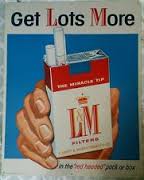
In 1953 L&M Cigarettes are introduced by Liggett & Myers, with "Alpha-Cellulose" filter tips, "just what the doctor ordered"; per-capita cigarette consumption declines 8.8% in 1953-5.
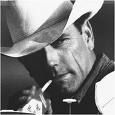
In 1954 Chicago ad agency Leo Burnett Worldwide (founded 1935) creates the Marlboro Man for heretofore womens-only Marlboro filtered cigarettes after seeing a 1949 Life mag. photo of Clarence Hailey Long (1910-), foreman at the 320K-acre JA Ranch in Tex., and next year the image is introduced nationally, causing sales to leap 3,241% to $5B, becoming #1 in the world by 1972 even after cigarette commercials are banned in the U.S. in 1971.

In 1954 Tareyton brand filtered cigarettes are introduced by the Am. Tobacco Co., with a 2-part filter design using fiber and activated charcoal, and ad slogans "Mildness makes the difference" and "Discriminating people prefer Herbert Tareyton... with the genuine cork tip to protect the lips"; in 1963-81 the new slogan "Us Tareyton smokers would rather fight than switch" shows users sporting black eyes.

In 1954 Winston brand cigarettes are introduced by the R.J. Reynolds Tobacco Co., with the killer ad slogan "Winston tastes good like a cigarette should" causing it to become the best-selling cigarette on Earth in 1966-72, sliding to #2 in 1973, and #6 in 2005; in 1972-2003 it sponsors the NASCAR Winston Cup Series.


On May 3-5, 1968 black tennis player Arthur Ashe is allowed to play on the whites-only courts at Byrd Park in Va. for the first time, helping the U.S. Davis Cup team defeat the British West Indies team; Wimbledon finally allows profs. to complete; Rod Laver wins the Wimbledon men's singles tennis title, and Billy Jean King wins the women's title; Arthur Ashe becomes the first African-Am. to win the U.S. Open men's singles tennis title at Forest Hills, N.Y.; Margaret Court Smith wins the women's singles title; Ashe also wins his first U.S. Open men's singles, while Sarah Virginia Wade (1945-) of Britain wins the women's singles title; on July 22 Philip Morris introduces Virginia Slims brand cigarettes for women in 1968, with the slogan "You've come a long way, baby", and the message that smoking keeps your weight down and tennis is a spectator sport?;meanwhile the avg. smoker puffs down 205 packs a year (571.1B cigs total).
In 1988 R.J. Reynolds Tobacco Co. releases the Premier Smokeless Cigarette, developed at a cost of $1B; after smokers ignore instructions not to light it with a match, causing it to smell like a fart and taste like shit (plus being so hard to draw that it can cause a hernia?), it flops and is withdrawn next year, but Reynolds reintroduces it as the Eclipse brand in the 1990s.
On Apr. 2, 1993 Marlboro Friday ("The day the Marlboro Man fell of his horse" - Fortune) sees Philip Morris announce a 20% price cut on their Marlboro brand cigarettes to fight generics, causing its stock to drop 25% and take other name brand cos. incl. Coca-Cola and RJR Nabisco with it, causing rumors of the "death of brands", which prove false as high-budget ad campaigns make brand names stronger than ever.On July 14, 2000 a Fla. jury rules that big tobacco cos. are guilty of racketeering and fraud for deliberately deceiving the public about the effects of smoking, and must pay a shocking $145B to settle hundreds of thousands of health claims; their appeal is denied on May 22, 2009, and they must quit using labels such as "light", "mild", or "low tar" on their packaging; the cos. incl. Philip Morris, Altria, R.J. Reynolds, Brown and Williamson, British Am. Tobacco., and Lorillard Tobacco (acquired in 1971 by Loews Corp. of theater fame); Liggett Group was excluded from the ruling because it came clean and fessed up in the 1990s.
On Mar. 19, 2012 the U.S. 6th Circuit Court of Appeals rules that an FDA regulation requiring every tobacco co. to put graphic anti-smoking images on their packages is constitutional.